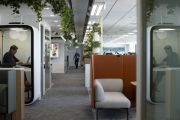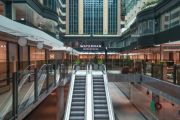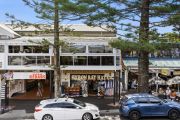
Thursday Island oceanfront site boasting a wartime wharf yours for $7m-ish
A Thursday Island opportunity carrying the legacy of one of Australia’s northernmost WWII defence lines has surfaced at the top of Australia.
The oceanfront property – believed to be the northernmost property for sale anywhere in the country – offers waterfront views, wartime history and the possibility of a future luxury lifestyle at the water’s edge.
The development and leasehold opportunity, located in one of the country’s most remote and beautiful regions, is being marketed by Colliers International Cairns with a price tag of around $7 million.
The site, boasting 12,825 square metres of freehold land across two titles and a further 2.3-hectare seabed lease, sits on the island’s south-eastern edge and remains one of the most strategically significant private properties in Far North Queensland, a major service hub of the Torres Strait.
“It’s probably one of the most incredible locations I’ve seen on the north Queensland coast,” says listing agent Stacey Quaid, managing director of Colliers Cairns.
“I’ve often thought there’ll be someone with enough money that says: ‘I’m just gonna buy that site, build my dream home and live the lifestyle’.”
The property – located at Lot 61 & 62 Douglas Street, Thursday Island – is a rare remnant of Australia’s wartime history, tied to WWII naval operations, and brimming with future hope.
Although often described locally as a former US Army outpost, the site is understood to be part of a 1943-built naval fuel and wharf installation to support allied operations across the Torres Strait.
“They built the wharf there way back in the Second World War, and it’s ideally positioned, having, not only that wharf – which needs some repairs – but it’s the undersea basin that comes with the property that’s useful,” says Quaid. “So, you’ve got acreage, if you like, out into the waterways.”
The property, longtime home to the ferry business Rebel Marine, which provides vital transfers to nearby islands, includes residential buildings where the company’s staff sleep, older industrial structures, a private slipway, and seafood processing facilities on land and at sea.
Constructed as a strategic refuelling and logistics point during the height of the Pacific campaign, the waterfront precinct formed part of a wider defence network that serviced both Australian forces and US military units moving through the region.
Much of that wartime infrastructure, including the original wharf and the deep undersea basin engineered for naval access, remains today.
After the war, the military withdrew, and the site shifted to pearling operations undertaken by the South Sea Pearling Company in 1949, before eventually becoming the base for Rebel Marine.
“The owners of the site also own a ferry business, so they ferry passengers across from Horn Island to Thursday Island. They also utilise it for a base for their staff and their facilities,” says Quaid.
Thursday Island is the financial and service heart of the Torres Strait, linking dozens of islands stretching toward Papua New Guinea. “It is a major hub,” adds Quaid.
Access to the region flows through nearby Horn Island Airport, with passengers ferried across to Thursday Island before continuing to outer islands via Rebel Marine.
Playing a pivotal role in the region’s logistics, Rebel Marine provides a holding income for investors keen to sit tight and make a plan – to expand into freight services, or build a dream home.
Quaid says a freight service would counterbalance an existing regional monopoly in addition to its ferry and on-demand water taxi services.
“It’s potentially another option for freight in the Torres Strait,” Quaid notes. “There’s only one freight company operating up there.”
However, the site is zoned Residential 2 higher density, offering a wealth of redevelopment options, including residential, maritime or industrial outcomes. The leasehold includes the wharf, car park and marine processing plant.
Back in 2008, plans for 30 multilevel luxury apartments with views towards Horn Island were drawn up but failed to gain traction.
“It’ll either be developed into a combination of maritime and residential use, or potentially it may serve as an industrial hub for the island. It was originally zoned for industrial use, and then was back-zoned a couple of years ago to residential, and the owners are looking at that at the moment to see if they can extend that industrial type use for marine activities,” he says.
Developers may wish to redevelop the wharf, commercialise the slipway, or add further on-water facilities, subject to approvals, to take advantage of the surrounding ocean channels of the turquoise Arafura Sea.
The site’s live crayfish processing business, once significant, was impacted by COVID-19 and the Chinese market closure. “Prior to COVID, it was a big business and a big operation,” says Quaid, adding, “It actually went into hibernation.
“The original crayfish business is nothing like what it was.”
The property has returned to the market after a lengthy contractual period that ultimately stalled.
“It was under contract for nearly two years … It didn’t go ahead because the buyer couldn’t get the ultimate approval,” he says. “It’s only been back on the market now, I think, for about a year.”
Quaid says he has long viewed the site as one of the most breathtaking locations in northern Australia. “It’s just the positioning of the land right on the edge of the island with views and breezes. It’s an incredible spot,” he says.
The Torres Strait’s crystalline waters only heighten that appeal. “In the Torres Strait, the ocean is a different colour,” he adds.
“Flying over you can see the reefs, and sometimes you can see the fish. It really is an incredible, unspoiled part of the world.”











